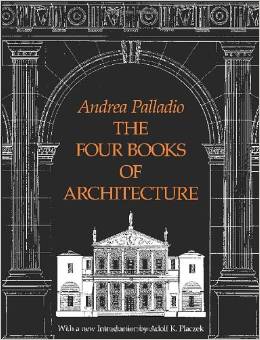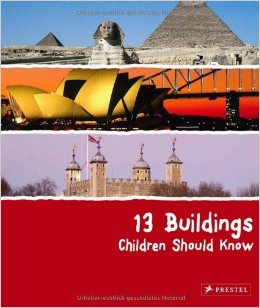Detailed Bibliography for ‘The LEGO Architect’ book
This is an enhanced bibliography for my book The LEGO Architect, with more references than the abridged bibliography included in the book. (I’ve highlighted my favorite references in the list below.) It is meant as a reference for people who want to dig deeper into these subjects, and includes selected quotes which caught my attention during my research. The primary sources for this book were books and documentary videos, although online research using the Wikipedia and other resources is inevitable. (I have referenced a few of the online resources I used, but am unable to include all of them.)
To prepare the book, I researched a single Architectural style at a time. While the book is organized chronologically, the chapters were researched, written, edited and rewritten in a looser order. (I prepared the first drafts of two chapters before selecting a publisher: Art Deco, then Neoclassical) The remaining chapters were written as follows: Brutalism, Postmodernism, High-Tech, Prairies, then re-writes of Art Deco and Neoclassical chapters. This bibliography has been organized into groups based on subject matter and architectural style. Since there is a lot of overlap in the recent history of architecture, each reference had a broader influence than the category it’s in. Notably, many of the books about Postmodern architecture include many of the works which I included in my “High-tech” chapter.
Neoclassical
Pg. 15 has a useful sidebar about Piranesi and the Grand Tour. “In Rome after 1740 he began engraving views of the city and its ruins, capturing the imaginations and purses of artists and aristocrats on the Grand Tour.”
Pg 7. “(i) The first half of the century was pervaded by the spirit and forms of the Baroque, while the second half was the age of Neo-classicism. (ii) The characteristic building types of the first half were churches and palaces, while those of the second half were public and institutional buildings.”
Pg 10 includesthe scathing quote byColen Campbell against the Baroque: “endeavored to debauch Mankind with his odd and chimerical Beauties, where the Parts are without Proportion, Solids without their true Bearing, Heaps of Materials without Strength, excessive Ornaments without Grace, and the Whole without Symmetry.”
Pg 11. “The distinctions were, approximately , between a rational and literal use of the antiaue – ‘rational’ here implying a conception of the antique as having evolved out of building needs and therefore capable of continued modification, and ‘literal’ implying an acceptance of antique forms as unalterable absolutes.”
Pg 77. “The real nature of Neo-classicism in architecture is in a combination of the ideal of ‘noble simplicity’ with that of a rational application of the classical elements.”
Pg 80. “it was not the stylistic product of a school of architects in one country but rather an ideological movement to which individuals in several countries contributed and whose principles were easily communicable.”
Pg. 11. “an era that was characterized in part by its reaction to what has come to be seen as the vapidity of the rococo.”
Prairie
Pg. 54. “A building should contain as few rooms as will meet the counditions which five it rise and under whichs we live, and which the architect should strive continuially to simplify … really there need be but one room, the living room with requirements otherwhise sequestered from it or screened within it by means of architectural contrivances.”
Modernism
Pg 4. “Although Penn Station’s stupendously grand waiting room was decked out with all the elaborate masonry detailing of the Classical copybook, the concourse-where travelers descended to the train platforms on the level beneath it-dispensed with stone cladding and left the building’s steel supports exposed.”
Pg xiv. “To be sure, after World War I the pioneering advocates of the Modern Movement had also declared that the building art was going through an epochal break, nothing less than the end of history in a literal sense, because they believed that eternal architectural perfection had at last been attained.”
Pg xv. “…had nothing to do with ideology and everythign to do with economics: the new way of construction was simply much cheaper and more profitable than earlier, more ornamented modes.”
Pg 5. Louis Sullivan chapter: “Most important, however, was Sullivan’s understanding of the necessity for undifferentiated, easily convertible office space throughout all the stories of the shaft: it was this innovation that drew clients to him…”
Pg 49. Philip Johnson in 1959 about Mies van der Rohe: “Mies based his art on three things: economy, science, technology; of course he was right. It’s just that I am bored. We are all bored.”
Pg 54. Quote by Mies van der Rohe: “In architecture, the proportions that are important are not always the proportions of the things themselves. Often it is the proportions between the things that are important. There may be nothing there, but the proportions are still there.”
Pg xii. “Wright, oldest by a decade or so and a man with nearly as much arrogance as genius , was a fover of the lwan, dedicated to the harminy of structure and site.”
Pg. xiii. “Mies was the acknowledged master of skin and bones building–the strength of steel for skeleton, the veil of glass.”
Pg 7. “In John Ruskin’s ‘The SevenLamps of Architecture’, Frank [Lloyd Wright] was exposed to the notion that art and architecture are natural expressions and, as such , are controlled by laws of integrity and morality.”
Pg 14. Frank Lloyd Wright said boxy modern houses were “coffins for living.”
Postmodern
Pg 9. “By the mid 1930’s, in many places the tenets of the Modern Movement were being eclipsed by the modernity interpreted as a monumental classicism, spurred in part by the interests and patronage of governments in Soviet Russia, Nazi Germany, Fascist Italy, and the United States.”
Pg 17. – “Following the lead of Gropius at the Bauhaus, historical studies had been excised from the curricula of most schools of architecture in the United States (although not at Venturi’s Alma mater, Princeton.)”
Pg 16. “Architects can no longer afford to be intimidated by the puritanically moral language of orthodox Modern architecture.”
Pg 16. quoting Paul Rudolph: “All problems can never be solved… Indeed it is a characteristic of the twentieth century that architects are highly selective in determining which problems they want to solve. Mies, for instance, makes wonderful buildings only because he ignores many aspects of a building. If he solved more problems, his buildings would be less potent.”
Pg 128. “At first glance we note two main movements, which have taken on seemingly irreconcilable positions in their programmatic struggle: “high tech” architecture (which is based predominantly on the expressive qualities of technological procedures and constructions, and which offers the Olympic stadium in Munich, the Expo pavilion in Osaka, and the Pompidou Center in Paris as it’s best known examples) and postmodern architecture (which takes into account the history of architecture and refers to the given factors of the whole cultural settings.)”
Pg 153. Quoting VRSB: “…gradually emerged with increasing clarity in the 1960s: the realization of architecture as a ‘vehicle of signs’…”
pg 158. Rough quote from Robert Venturi: “the decoration of the shed is at least as important as the shed itself.”
Pg 12. “Programmed, continuously rolling pleasure, the shunting of people into queues, pens, and moving lines, a process which was perfected by Walt Disney, has now been applied to all areas of mass tourism, resulting in the controlled bland experience.”
Pg 12. “In short, buildings today are nasty, brutal and too big because they are produced for profit by absentee developers, for absentee landlords, for absent users whose taste is assumed to be clichéd.”
Pg 34. “architectural language… must use known units of meaning… architectural ‘words’.”
Pg 35. “the classical orders were a kind of pretentious Latin, not the everyday vernacular of industrial building and sober utility.”
Pg 36. “pitched roof conventionally signifies ‘home’ in northern countries”










































